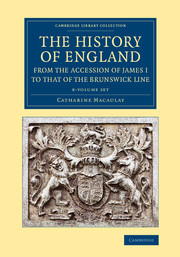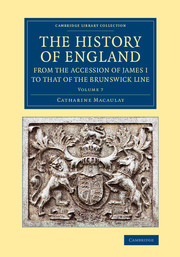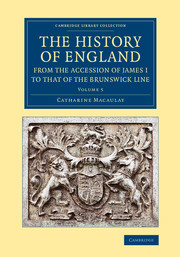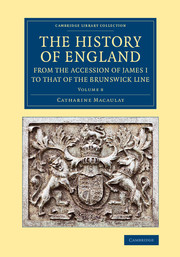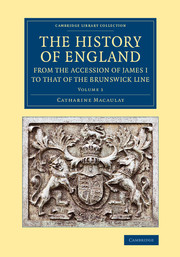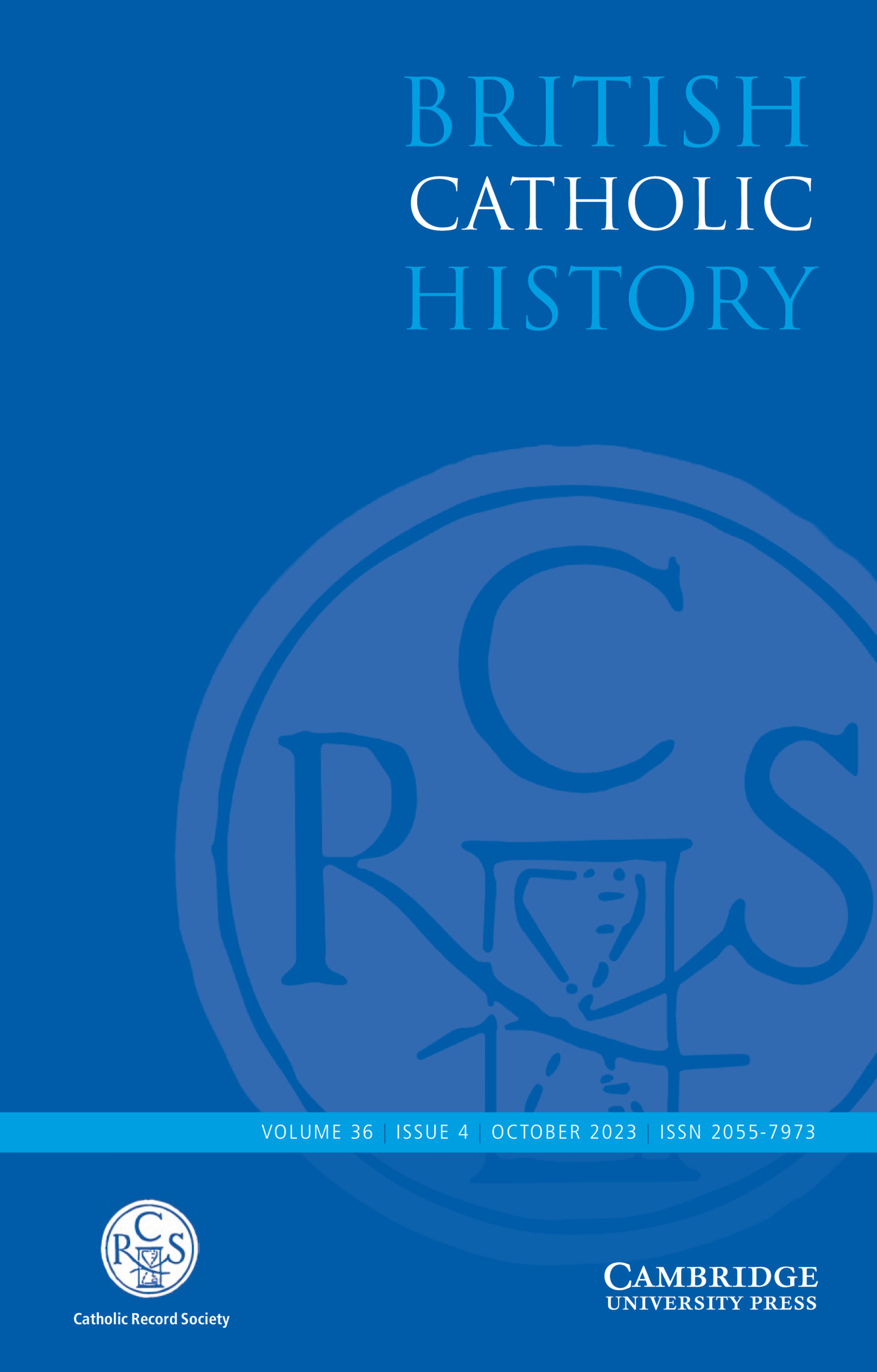The History of England from the Accession of James I to that of the Brunswick Line 8 Volume Set
A landmark in female historiography, this work first appeared in eight volumes between 1763 and 1783. Notable for her radical politics and her influence on American revolutionary ideology, Catharine Macaulay (1731–91) drew diligently on untapped seventeenth-century sources to craft her skilful yet inevitably biased narrative. Seen as a Whig response to David Hume's Tory perspective on English history, the early volumes made Macaulay a literary sensation in the 1760s. Later instalments were less rapturously received by those critics who took exception to her republican views. Both the product and a portrait of tumultuous ages, the work maintains throughout a strong focus on the fortunes of political liberty. Beginning with the founding of the dynasty in 1603, Macaulay paints a particularly vivid picture of Stuart tyranny under Charles I. Later volumes go on to cover the English Civil War, the Commonwealth, the Restoration and the Glorious Revolution.
Product details
September 2013Multiple copy pack
9781108067645
3676 pages
323 × 418 × 180 mm
7.47kg
1 b/w illus.
Temporarily unavailable - available from TBC
Table of Contents
- Volume 1: Introduction
- Part I. James I:
- 1. Accession of James
- 2. Gun-powder plot
- 3. Parliament
- 4. Rise of Somerset
- 5. Cautionary towns delivered
- 6. Negotiations with Spain
- 7. The unjust treatment of Sir Edward Coke
- 8. Parliament
- 9. State of the civil and ecclesiastical government of England at the accession of the Stewart family
- Part II. Charles I:
- 1. Accession of Charles
- 2. Violent measures of the court. Volume 2: Advertisement
- Part II. Charles I (cont.):
- 1. Attempt to relieve La Rochelle
- 2. The king's declaration
- 3. The king's journey to Scotland
- 4. Trial concerning ship-money
- 5. State of religion in Scotland
- 6. Parliament
- Appendix. Volume 3: Part II. Charles I (cont.):
- 1. Court of Star-chamber, and other arbitrary courts, abolished
- 2. The leaders of the popular party attempt to wrest from the king the power over the militia
- 3. The king enters new projects to subdue opposition
- 4. An ordinance to settle the militia by authority of parliament passes both houses
- 5. State of each party on the commencement of war. Volume 4: Part II. Charles I (cont.):
- 1. Discord between the two houses
- 2. Strength of the king and parliament
- 3. Feuds in parliament
- 4. Growth of the Independents
- 5. Rancor between the Presbyterians and Independents
- 6. Second civil war
- Appendix. Volume 5: Part III. Republic:
- 1. The house of commons abolish monarchy and establish a republic
- 2. Disagreement between the English parliament and the Scots
- 3. Total reduction of Scotland
- 4. Declaration of the army
- 5. The conduct of the usurper offensive to all parties
- 6. Ill policy and necessities of Cromwell
- 7. Richard Cromwell proclaimed protector by the council and army
- 8. Transactions of parliament
- 9. The army constitute a committee of safety for the administration of the government
- 10. Matters relating to Charles Stewart
- 11. Dissertation
- Appendix. Volume 6: Preface
- Advertisement
- Part IV. Charles II:
- 1. New ministry
- 2. Presbyterian neglected
- 3. Charles favours the French interest
- 4. Triple league
- 5. Imminent danger of the Dutch. Volume 7: Part IV. Charles II (cont.):
- 1. Campaign of 1674
- 2. Popish plot
- 3. Duke of York leaves the kingdom
- 4. Several of the nobility petition for a parliament
- 5. Policy of Lewis
- 6. Plan of arbitrary power concerted between the king and the duke
- 7. Project of an insurrection
- Advertisement. Volume 8: Part IV. Charles II (cont.):
- 1. Monmouth surrenders himself
- Part V. James II:
- 2. James's speech to the Privy Council
- 3. Close connection between the courts of England and France
- 4. Controversial preaching prohibited
- 5. State of parties
- 6. Preparations in Holland for an embarkation
- 7. Addresses for the prince of Orange.

